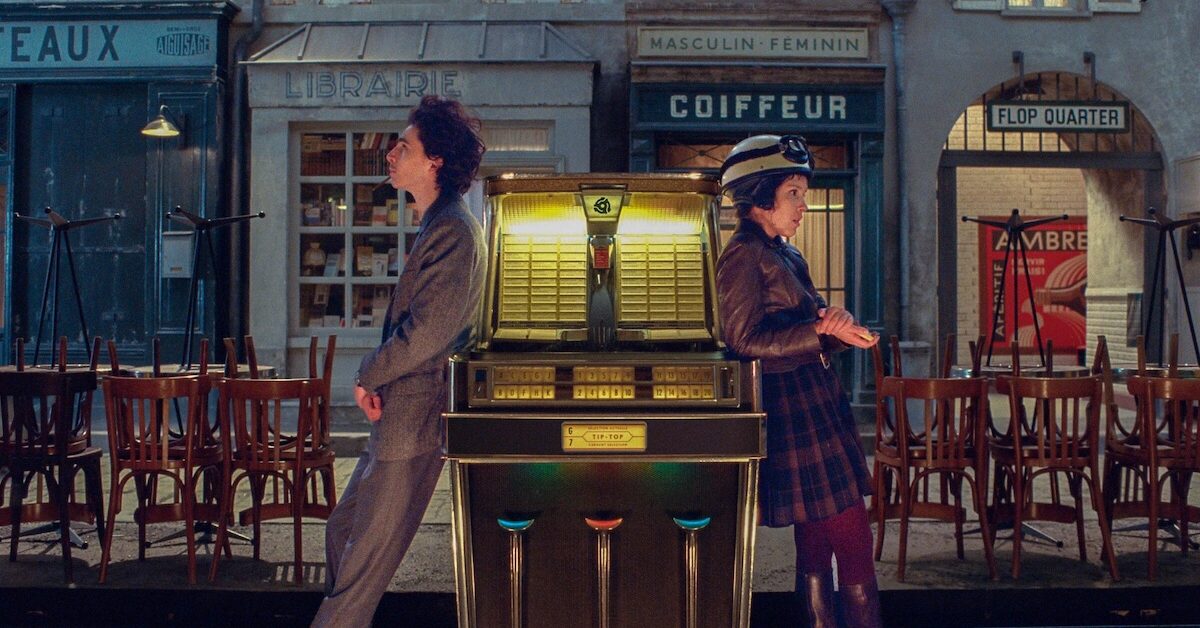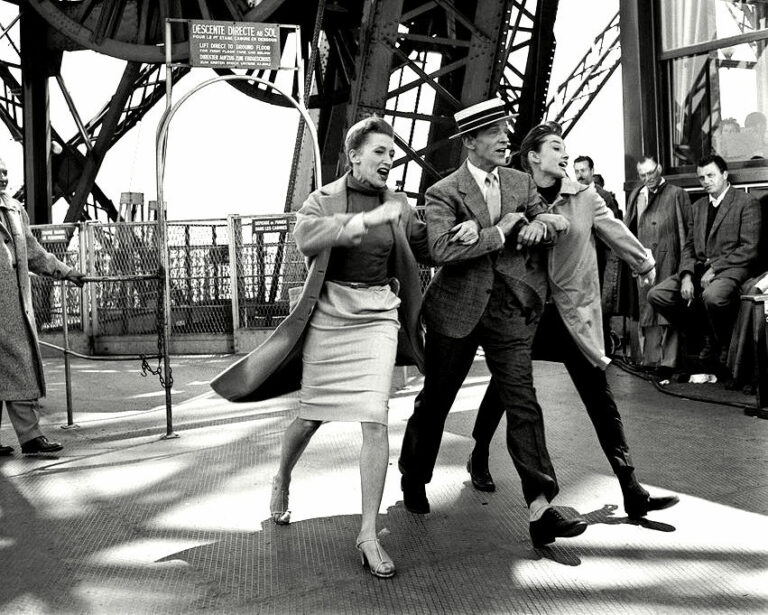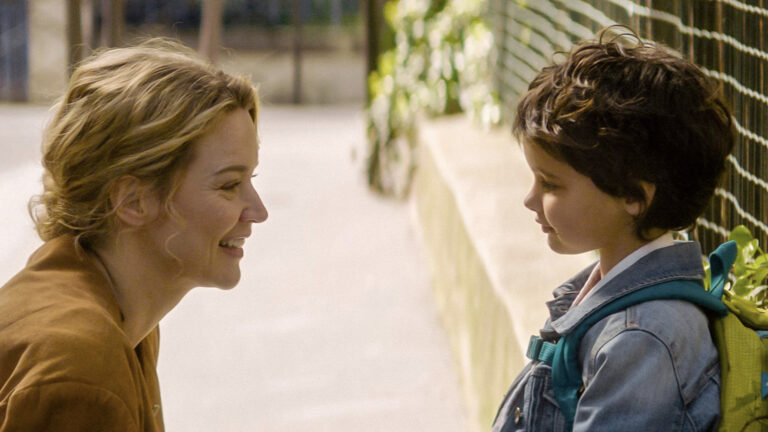It has finally arrived. More than a year after its original scheduled release, Wes Anderson’s new film, The French Dispatch of the Liberty, Kansas Evening Sun, is out in theaters.
This long-awaited film from one of this generation’s most beloved and idiosyncratic directors consists of several vignettes about the exploits of journalists and magazine editors at the titular publication, the French offshoot of a fictional American magazine based on of The New Yorker. Last month, in anticipation of the film, Anderson released a collection of essays from The New Yorker that helped inspire the film, called An Editor’s Burial. The book contains articles about life in Paris from some of the great American expatriate journalists of the 20th century, including James Baldwin, Mavis Gallant, A.J. Liebling, Luc Sante, Lillian Ross, and more.
The French Dispatch, set in the fictional town of Ennui, feels somewhat like Wes Anderson trying to cram everything Wes Anderson into one film. The cast list alone makes you wonder if Anderson invited every actor he’s ever worked with to a party, put them in costume, and then just started filming. The list of famous cameos is exhausting, but to start you’ll find Bill Murray, Owen Wilson, Jason Schwartzman, Tilda Swinton, Benicio del Toro, Elisabeth Moss, Timothée Chalamet, Saoirse Ronan, Adrien Brody, Léa Seydoux, Frances McDormand, Christoph Waltz, Jeffrey Wright, Stephen Park, Edward Norton, and Willem Dafoe.
The film centers on the events surrounding the final edition of the magazine. As part of a quintessentially quirky last will and testament, the magazine editor Arthur Howitzer, Jr. (played by Bill Murray), demands the immediate closure of the magazine in the event of his death. As Howitzer is sent back to Kansas in a box for his first trip home in 20 years, his writers set about to write an obituary, not just for him, but for the magazine itself.
Considering that The French Dispatch is meant to be a fictional version of The New Yorker, it casts a light on Anderson’s vision of a golden age of expatriate writing, one that never got the “editor’s burial” that Howitzer did. After all, the story of the iconic expatriate American in Paris is one always told in the past tense, wrapped in nostalgia for a time that may or may not have even existed.
Following the “obituary” portion of the magazine is a brief homage to the city of Ennui, told by Owen Wilson’s cycling journalist Herbsaint Sazerac (who is blessed with possibly the best of the film’s fanciful character names). Filled with rats, pickpockets, prostitutes, and the other less-favored elements of a French city, this snapshot snatches off our rose-colored glasses, making it clear that Anderson is well aware of what people expect from this film. Worry not—you’ll get more than your fill of francophilic eye candy later on.
The first story, “The Concrete Masterpiece,” finds a slick and slimy art dealer, played by Adrien Brody, wrapped up in a mission to turn an incarcerated madman (Benicio del Toro’s grunting but brilliant Moses Rosenthaler) into the talk of the art world. Inside prison walls, the painter cares about nothing but his muse, Simone (Léa Seydoux), and the two of them conspire to perform a daring feat to snub the art world forever.
The second story, “Revisions to a Manifesto,” takes as its inspiration Mavis Gallant’s “The Events in May: A Paris Notebook Part I,” in which the writer documented her experiences on the ground during the May ‘68 student revolutions in Paris. In this section, Anderson mixes satire with true historical facts that feel like satire, such as the fact that the greatest social revolution in modern France began with male university students petitioning to be allowed access to the female dormitories. (True.) Or a “chessboard revolution” in which protestors squared off against riot police in a high stakes game of chess. (Fictional, but delightful.) Timothée Chalamet plays a young revolutionary, and Frances McDormand the expat writer whose journalistic integrity is put to the test by their romantic involvement.
The third and final story, “The Private Dining Room of the Police Commissioner,” is by far the most moving section of the film. Jeffrey Wright plays the food writer Roebuck Wright, an unexpected cross between A.J. Liebling and James Baldwin. While Wright tells a madcap story about a kidnapped child and a wild police chase, the ending is surprisingly poignant, as Wright bonds with the police commissioner’s chef (Stephen Park) about the melancholy side of being a foreigner. They are revealed as being two men for whom food is one of the sole reliable comforts in a strange land, something safe to care about in a world where comfort is never without cost, and love never without punishment.
A far cry from his last film, Isle of Dogs (2018), The French Dispatch harkens back less to Anderson’s feature films as it does to his short films, borrowing the amorous French misanthropy of Hotel Chevalier (2007), and the small-town European charm of Castello Cavalcanti (2013). Though in terms of old world glamor and melancholy, there is more than a glancing resemblance to The Grand Budapest Hotel (2014).
Aesthetically, it is true to Anderson’s form, with a few surprises. Much of the film, specifically the three “story” sections, are in black and white, a clear nod to the French New Wave films from Truffaut and Godard that inspired the movie. It’s a jarring choice for a director famed for his immaculately curated color palettes, but could be seen as a hint at their context: the black and white print of the magazine itself.
The black and white sections are contrasted with the vibrant mustard yellows and bright blues of the French Dispatch’s editorial office, and occasional flashes of color in the middle of otherwise greyscale scenes. There are even a couple of short animated sections in the third and final story. Since the actual time period of the film is loose at best, with Anderson borrowing from 1940s, 50s, 60s, and 70s looks and source material, it creates an overall sense of timelessness. You get the feeling that you could still drive out to a small town in France and find Roebuck Wright sitting at a cafe, or Herbsaint Sazerac dodging rowdy gangs of child thugs on his bicycle.
All in all, The French Dispatch seems designed to give us everything we could have asked for: beautifully-constructed dollhouse sets, classic French film romanticism, a naked Timothée Chalamet, and just a dash of good-natured New York snobbery. It’s a francophile’s delight, and a gateway to some of the best writing of the last century, distilled into a marvelous vintage courtesy of Chateau Anderson.







